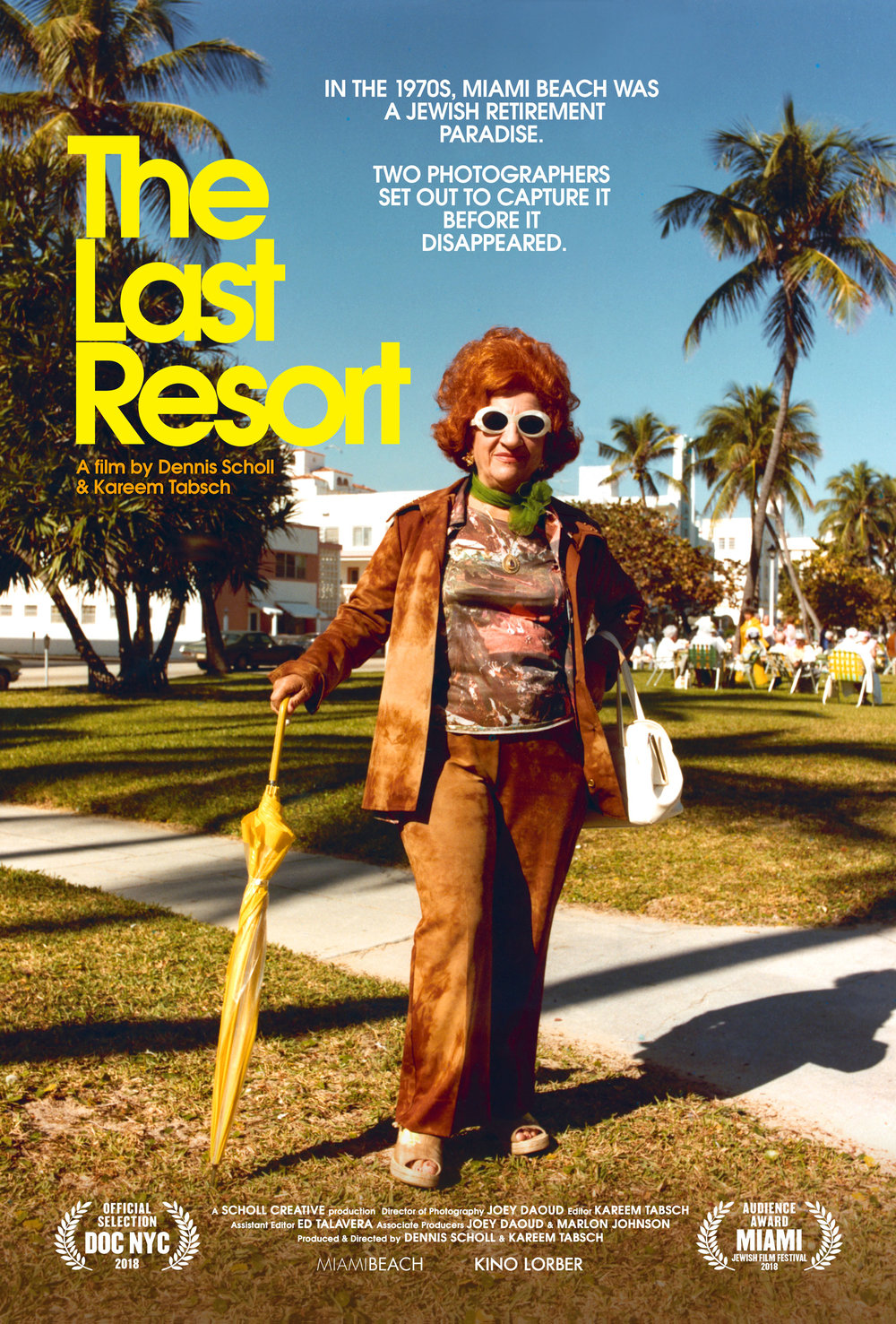By Bedatri D. Choudhury
Miami Told Through Old Photographs and Lost Stories
Screening in New York for the holidays, a new film draws on photos Gary Monroe and Andy Sweet took as a part of the Miami Beach Photographic Project through the 1970s and into the early 80s.
The thing that connects all depictions of South Beach, Miami, is a zest for life, a zeitgeist that thrives on everyone living life to the fullest. While today that might translate into the stereotypical idea of Miami as a manicured party town by the beach, filmmakers Dennis Scholl and Kareem Tabsch chose to turn their lenses back in time to document the very vibrant community of elderly Jewish retirees who chose to move to Miami, escaping the harsh winters of the Northeast.
Their film, The Last Resort looks back to a time when South Beach was home to the largest cluster of Jewish retirees in the country. The first wave of Jews came to Miami in the late 1800s and South Beach was one of the few neighborhoods that did not discriminate against them. Living together in a six by fifteen block area, the community was robust and thrived with carefree, unbridled joy. In making the documentary, the filmmakers focus on the photographs of Gary Monroe and Andy Sweet, that were taken as part of the Miami Beach Photographic Project through the 1970s and into the early 80s.
“It was a lot like South Beach today, but instead of 18-21 year olds, think of everyone between 81 and 82,” Monroe says while describing the Miami of his youth. Scholl and Tabsch, both having grown up in Miami, were inspired by the work of Sweet and Monroe and decided to make a documentary that sought to narrate the history of the time and space portrayed in the photographs. For them, it is important to remind people about this vibrant and dynamic Jewish subculture; a community that founded a robust social ethos within Miami. “I hope that people can realize that there was a community of people that came before the models and the partiers of South Beach today. They were pioneers who made this place what it is: rich and filled with history,” Tabsch told Hyperallergic. For him and Scholl, the photographs of Sweet and Monroe are beautiful and illustrious reminders of that history. The documentary is an effort to acquaint people with the photographers’ work, but also tells a history of Miami.
Sweet with his colorful palette and Monroe with his more formal and rigid black and whites, obsessively photographed South Beach’s elderly Jewish population. While the Jewish community has long dispersed to other neighborhoods in Miami, the photographs stand as reminders of the community’s brightest days. Capturing the everyday, Sweet photographed the self-described “porch-sitters” in the sun, hats on, chatting and reading the newspaper — connected to the world, from a safe perch. While the rest of the country was consumed by anti-war and civil rights movements. Miami, earning the nickname of Little Jerusalem, remained a bubble.
People in the film recall congregating in parks and recognizing old friends by their tattoos from concentration camps. It is this bittersweet legacy the photographers capture through a close study of one neighborhood in particular. Sweet and Monroe documented gatherings in delis, exercise clubs, and dance clubs. Because the buildings in these photographs are long gone or have been repurposed as concert venues or department stores, the film, Scholls tells Hyperallergic, is “ like a time capsule, almost as if frozen in amber.”
The photos build an archive of candid shots: elderly couples sunbathing with a deep blue sea behind them, women in their bright swimsuits displaying prominent tan lines, sitting by a hotel pool and talking, women blowing into their noisemakers in a New Year’s Day party, people wheeling their groceries on a sunny afternoon. We see people taking a well-deserved happy break after a life of toil. By the 1990s, pressured by rising rents and the art deco revival, and petrified of the drug mafia, the elderly and ailing Jewish population relocated from South Beach. While Monroe moved on his lenses to Haitian refugees, Sweet’s career ended with his dramatic murder.
The Last Resort resurrects Miami as an artistic muse, bringing together authors, artists, and filmmakers who grew up in Miami of the 1970s, and listens to them as they recount their childhoods and the art it has inspired. For them, it’s a place storied by the saga of immigration, migration, religion, and culture. For the rest of us, it’s a community slowly being remembered into re-existence.



